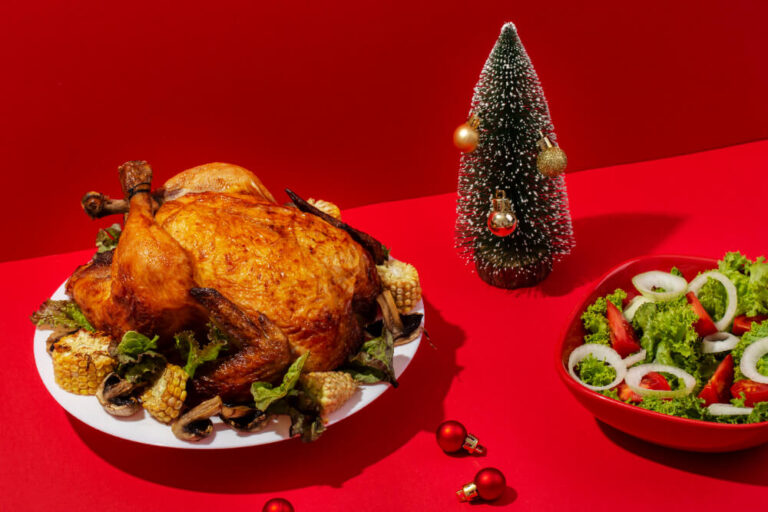Cooking a turkey can be simple and satisfying when done right. Whether you’re preparing for a holiday feast or a weeknight dinner, this guide ensures perfectly cooked turkey every time. Here’s everything you need to know.
Preparation and Essentials for Cooked Turkey
Choosing the Right Turkey
A perfectly cooked turkey begins with selecting the right bird. Consider these tips:
- Fresh vs. Frozen: Fresh turkeys taste better but have a shorter shelf life. Frozen turkeys are more convenient for storage.
- Size: Plan one pound of turkey per person. This ensures enough for everyone, plus leftovers.
- Organic or Free-Range: These options provide better flavor and quality.
For more on selection, visit this turkey preparation resource.
Necessary Kitchen Equipment
Gather these essentials before starting:
- Roasting pan with rack
- Meat thermometer to check safe cooking temperatures
- Baster for keeping the turkey moist
- Aluminum foil for tenting the bird
- Carving knife for clean, precise slices
Having the right tools ensures success.
Preparing the Cooked Turkey
Follow these steps to prep your turkey like a pro:
- Thaw Properly: Let frozen turkey thaw in the refrigerator. Allow 24 hours of thawing for every 5 pounds.
- Clean and Dry: Remove the giblets and neck. Rinse and pat the bird dry.
- Season Generously: Rub salt, pepper, rosemary, and thyme inside and outside.
- Optional Brining: Brine the turkey in a saltwater solution overnight to enhance moisture.
For detailed brining steps, you can check this guide to brining.
Roasting Step-by-Step
Follow these steps for juicy results:
- Preheat the Oven: Set the temperature to 325°F (163°C).
- Prepare the Pan: Place the turkey on a roasting rack and add veggies like carrots and onions for flavor.
- Tent with Foil: Cover the bird loosely to prevent browning too quickly.
- Roast Per Pound: Cook for 15 minutes per pound of turkey.
- Baste Regularly: Baste every 30 minutes with melted butter or drippings to keep the meat moist.
For oven-roasting inspiration, visit this detailed tutorial.
Common Mistakes to Avoid Cooked Turkey
Avoid these errors for a better result:
- Skipping the Thermometer: Always check the temperature to ensure safety—165°F for the breast, 175°F for the thighs.
- Overcooking: Monitor cooking time to keep the turkey juicy.
- Skipping Resting: Let the turkey rest for 20–30 minutes before carving to retain juices.
FAQs About Turkey
- Can I eat cooked turkey after 5 days?
Refrigerated turkey is safe for 3–4 days. - How is turkey cooked?
It’s typically roasted, baked, or fried. - Is turkey done at 165°F or 180°F?
The breast should reach 165°F, and the thighs 175°F. - How long to cook turkey in the oven?
Cook at 325°F for 15 minutes per pound.
Pair your turkey with Christmas Stuffing Recipes or try Simple Herb-Roasted Turkey for a flavorful feast.
Turkey Variations, Serving Tips, and Leftover Magic
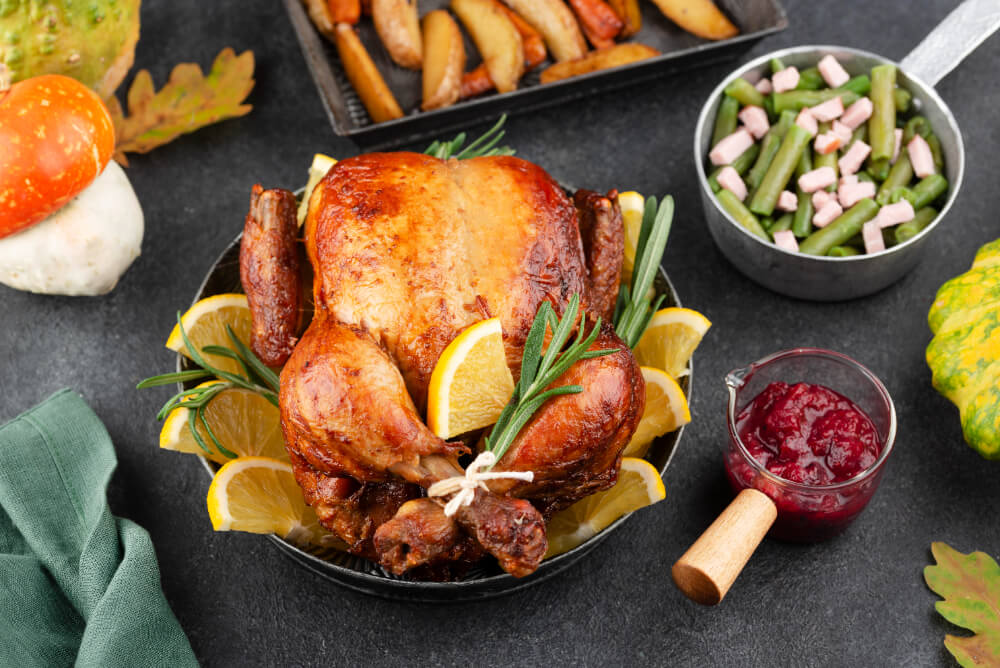
Different Turkey Preparations
When it comes to cooked turkey, there are endless variations to suit every palate and occasion. From roasting to deep-frying, each preparation offers unique flavors and textures. Let’s explore a few popular styles:
- Roasted Turkey: The classic method, featuring a golden, crispy skin and moist, tender meat. This preparation is perfect for Thanksgiving or any festive gathering. For tips on achieving that perfect roast, check out this step-by-step guide.
- Smoked Turkey: A great option for those who love a hint of smokiness. Smoking a turkey requires a smoker and patience, but the rich flavor is worth it.
- Deep-Fried Turkey: Perfect for achieving a juicy interior and crispy exterior in less time. However, ensure you deep-fry outdoors in a safe setup.
- Grilled Turkey: Adds a barbecue twist to your meal. Grilling allows you to infuse the meat with smoky and charred flavors, making it ideal for summer gatherings.
For a deeper dive into these methods, explore 30minrecipes.com’s roasted turkey tips for consistent results every time.
Serving Tips for Cooked Turkey
To elevate your turkey presentation, consider these simple yet effective serving tips:
- Let it Rest: Allow the turkey to rest for 20-30 minutes before carving to seal in the juices.
- Carve Like a Pro: Use a sharp knife to carve thin, even slices. Start with the breast and work toward the legs.
- Accompaniments Matter: Pair your turkey with classic sides like cranberry sauce, garlic mashed potatoes, and roasted vegetables for a complete meal. Don’t forget to add gravy for that final touch.
- Plating: Arrange slices on a large platter and garnish with herbs like rosemary or thyme for a beautiful presentation.
Creative Leftover Ideas
One of the best parts about turkey is the leftovers. Here are some delicious and innovative ways to give your cooked turkey a second life:
- Turkey Salad: Toss shredded turkey with mayonnaise, celery, and a dash of mustard for a quick salad. Serve it over lettuce or on a sandwich.
- Turkey Tacos: Use shredded turkey as a taco filling with salsa, guacamole, and cheese.
- Turkey Soup: Create a comforting soup by simmering leftover turkey with vegetables, noodles, or rice in a savory broth.
- Turkey Fried Rice: Combine diced turkey with rice, soy sauce, and stir-fried vegetables for a quick meal.
- Turkey Casserole: Layer turkey with stuffing, cranberry sauce, and gravy in a baking dish. Bake until heated through for an easy, crowd-pleasing dish.
If you’re looking for more ways to transform leftovers, browse 30minrecipes.com’s ideas for next-day turkey creations.
FAQs About Cooked Turkey
Here are answers to some common questions about cooked turkey:
- Can I eat cooked turkey after 5 days? Ideally, consume refrigerated cooked turkey within 3-4 days to ensure freshness and safety.
- How is turkey cooked? Turkey can be roasted, smoked, grilled, or fried, depending on your preferred method and tools.
- Can you buy ready-cooked turkey? Yes, many stores offer pre-cooked turkey, especially during the holiday season.
- Is turkey done at 165 or 180? Turkey is safe to eat when it reaches an internal temperature of 165°F. Use a meat thermometer for accuracy.
- How to cook a turkey for beginners? Start with a simple roasted turkey recipe. Season it well, baste regularly, and use a thermometer to ensure it’s fully cooked.
- Cooked turkey breast recipes? Turkey breast is versatile and works well in dishes like sandwiches, salads, and casseroles.
- Where to buy cooked turkey? Pre-cooked turkey is available at most supermarkets, especially during holidays. Look for stores offering fresh or frozen options.
- How long to cook turkey in the oven? Cook time depends on weight. Roast at 325°F for 15 minutes per pound, but always confirm with a thermometer.
- How to cook a turkey in the oven to be moist? Use a brine or baste frequently during cooking. Covering the turkey with foil can also prevent it from drying out.
Seasonal Pairings and Nutritional Insights for Cooked Turkey
Seasonal Pairings to Elevate Your Cooked Turkey Dishes
Turkey is not just a holiday staple; its versatility makes it suitable for a variety of seasonal pairings. Whether you’re planning a festive winter feast or a light summer meal, here are some complementary dishes to elevate your cooked turkey:
- Spring Pairings
Pair turkey with fresh, zesty flavors. A crisp asparagus salad with a lemon vinaigrette brings out the tender richness of turkey. Or consider serving turkey with roasted baby carrots and a drizzle of honey glaze. - Summer Delights
Keep it light! Turkey slices make an excellent protein in turkey avocado wraps or served cold with a tangy berry salad. Pair with refreshing beverages like cucumber water or lemonade. - Fall Favorites
Warm up your turkey with hearty sides. Roasted sweet potatoes, cranberry sauce, or even wild rice pilaf are perfect fall companions. For something unique, try a savory turkey pot pie infused with autumn spices. - Winter Comforts
Add turkey to rich casseroles or serve alongside creamy mashed potatoes and buttery green beans. Winter calls for warm, comforting meals, so opt for gravy-drenched turkey or turkey stuffing casseroles.
Pro Tip: Use leftover turkey to make a seasonal soup or stew. Add hearty root vegetables for a wholesome dish perfect for cold days.
Nutritional Facts (Per Serving)
Cooked turkey is not only delicious but also packed with essential nutrients. Here’s a breakdown of its nutritional profile (based on a 3.5 oz serving of roasted turkey breast):
- Calories: 135
- Protein: 24g (high-quality, lean protein)
- Fat: 3g (low in saturated fat)
- Carbohydrates: 0g
- Vitamins: Excellent source of B6 and niacin
- Minerals: High in selenium, phosphorus, and zinc
Turkey Nutrition and Health Benefits
- Low in Calories and Fat
Turkey is an excellent option for maintaining a balanced diet. Its low fat content, particularly in white meat, makes it ideal for weight management. Plus, the high protein content helps you stay full longer. - Rich in Essential Nutrients
Selenium, found in turkey, supports a healthy immune system. Vitamin B6 aids in brain development and function, while niacin promotes good heart health. - Versatile for Dietary Needs
Whether you’re following a low-carb diet or looking for a post-workout meal, turkey offers a lean, adaptable option.
Quick Tip: Opt for roasting or grilling your turkey to maintain its nutritional integrity while keeping calories low.

Frequently Asked Questions (FAQs)
- Can I eat cooked turkey after 5 days?
- It’s best to consume cooked turkey within 3-4 days when stored in the fridge at 40°F (4°C) or below. For longer storage, freeze leftovers for up to 2-6 months.
- How is turkey cooked?
- Turkey can be roasted, grilled, smoked, or deep-fried. Roasting is the most traditional method, ensuring even cooking and juicy results.
- Can you buy ready-cooked turkey?
- Yes, many grocery stores and deli counters sell pre-cooked turkey. This is a convenient option for busy families.
- Is turkey done at 165°F or 180°F?
- According to the USDA, turkey is safe to eat when it reaches an internal temperature of 165°F (74°C). For the best texture, white meat should be at 165°F, while dark meat is ideal at 175°F-180°F.
- How to cook a turkey for beginners?
- Keep it simple. Season your turkey with butter, salt, pepper, and herbs. Roast in the oven at 325°F (163°C), basting occasionally for a golden, juicy result.
- What are some popular cooked turkey recipes?
- Popular options include turkey chili, casseroles, and turkey-stuffed bell peppers.
- Where to buy cooked turkey?
- Pre-cooked turkey can be found at stores like Whole Foods, Costco, or local butchers.
- How long to cook turkey in the oven?
- General rule: roast turkey for 13-15 minutes per pound at 325°F (163°C). Use a meat thermometer to check doneness.
- How to cook a turkey in the oven to be moist?
- Brine the turkey beforehand and baste it regularly while cooking. Tent the bird with foil for the first part of roasting to retain moisture.
- What does cooked turkey pair well with?
- Classic pairings include mashed potatoes, cranberry sauce, roasted vegetables, and gravy.
Detailed Guide to Carving a Turkey
Carving a cooked turkey can seem intimidating, but with the right steps, it’s straightforward and rewarding. Follow this detailed guide to carve your turkey like a pro.
Tools You’ll Need:
- A sharp carving knife or chef’s knife
- A carving fork (optional, but helpful for stability)
- A large cutting board with grooves to catch juices
- A platter for serving
Step-by-Step Guide:
- Let the Turkey Rest
- Once cooked, allow the turkey to rest for at least 20–30 minutes.
- This helps the juices redistribute, making the meat juicier and easier to carve.
- Position the Turkey
- Place the turkey breast-side up on the cutting board.
- Use a carving fork or hold the turkey steady with your hand.
- Remove the Drumsticks
- Cut between the thigh and breast to separate the drumstick.
- Wiggle the drumstick to find the joint, then slice through it cleanly.
- Detach the Thighs
- Cut through the joint connecting the thighs to the turkey body.
- Slice the meat off the bone into smaller, serving-size pieces.
- Slice the Breast Meat
- Locate the breastbone at the top center of the turkey.
- Make a long, deep cut along one side of the breastbone.
- Follow the bone with your knife to remove the breast in one large piece. Slice it across the grain into thin pieces.
- Remove the Wings
- Cut through the joints to remove the wings.
- Wings are often served whole or cut into two sections for easier serving.
- Gather the Remaining Meat
- Turn the turkey over to carve off any additional meat from the back or underside.
- Save these bits for soups, stews, or sandwiches.
- Arrange on a Platter
- Neatly arrange your carved turkey on a serving platter.
- Place dark and white meat separately for easier selection.
Pro Tips for Carving:
- Sharp Tools Are Essential: A sharp knife ensures clean cuts and avoids tearing the meat.
- Work Methodically: Take your time to avoid shredding the turkey.
- Preserve the Skin: Try to keep the skin intact on each slice for added flavor and presentation.
- Save the Bones: Don’t toss the turkey carcass! Use it to make a flavorful stock for soups or gravies.
Carving your cooked turkey is just as much about presentation as it is about technique. By following these steps, you’ll ensure that each piece is juicy, tender, and ready for your guests to enjoy.
Plating and Saving Leftovers
How to Plate Your Carved Turkey
Making your cooked turkey look as good as it tastes is all about thoughtful plating. Here’s how to present your carved turkey beautifully:
- Separate White and Dark Meat
- Arrange breast slices (white meat) neatly on one side of the platter.
- Place dark meat, like thighs and drumsticks, on the other side for easy selection.
- Layer the Pieces
- Overlap the slices slightly to create a cascading effect.
- For drumsticks and wings, position them upright for visual appeal.
- Add Garnishes
- Surround the meat with sprigs of fresh herbs like parsley, rosemary, or thyme.
- Include colorful sides like cranberries, citrus slices, or roasted vegetables to brighten the presentation.
- Use a Warm Platter
- Serve the turkey on a warmed platter to keep it at an ideal temperature longer.
- Keep Gravy Nearby
- Offer a small gravy boat on the side to let guests drizzle over their portions.
How to Save Turkey Leftovers Efficiently
Turkey leftovers can be a lifesaver for quick meals. Proper storage ensures they stay fresh and flavorful.
- Cool It Quickly
- Allow the turkey to cool at room temperature for no more than 2 hours after serving.
- Refrigerate leftovers promptly to avoid bacterial growth.
- Portion the Meat
- Divide the leftovers into serving-size portions.
- Store white and dark meat separately for better use in recipes.
- Use Airtight Containers
- Store turkey in airtight containers or ziplock bags to prevent drying out.
- Label each container with the date to keep track of freshness.
- Freeze for Longer Storage
- If you don’t plan to eat the leftovers within 3–4 days, freeze them.
- Wrap the turkey tightly in plastic wrap, followed by aluminum foil, to prevent freezer burn.
- Ideas for Leftovers
- Use leftover turkey in recipes like turkey sandwiches, soups, casseroles, or salads.
- Incorporate turkey into breakfast dishes like omelets or breakfast burritos.
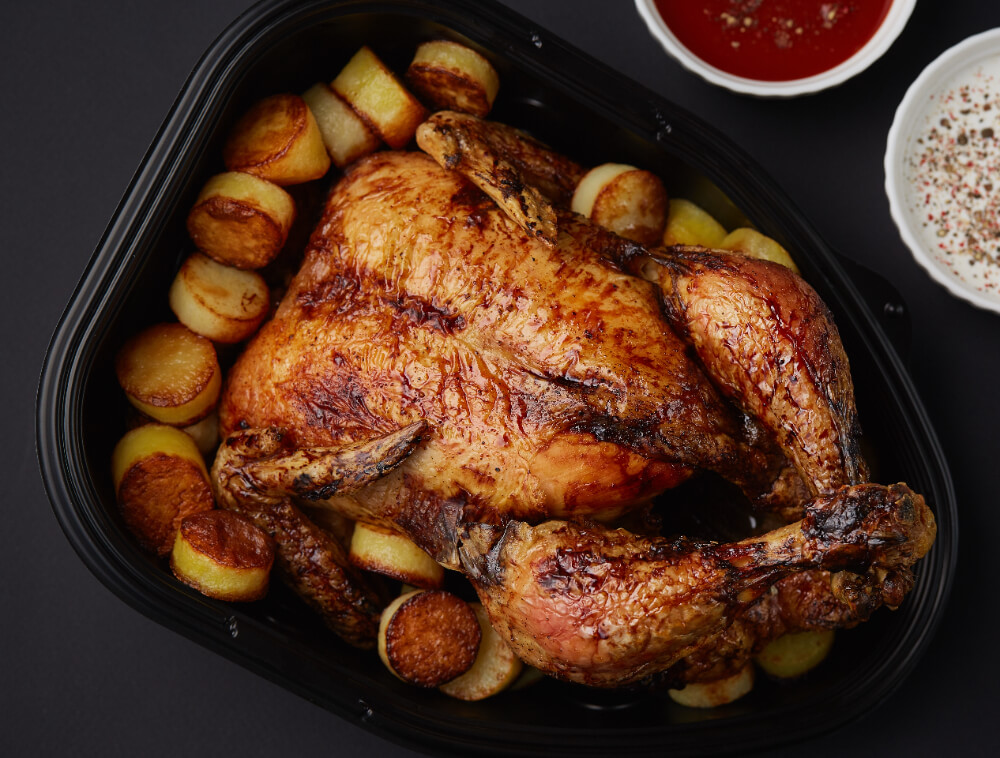
Pro Tip: Turkey Stock from Bones
Don’t let the turkey carcass go to waste! Follow these steps for making rich turkey stock:
- Break It Down: Cut the carcass into smaller pieces to fit in a stockpot.
- Add Aromatics: Simmer the bones with onions, carrots, celery, garlic, and herbs for 4–6 hours.
- Strain and Store: Strain the liquid, let it cool, and freeze in portions for later use.
Perfect Pairings: Sides and Drinks for Your Cooked Turkey
To elevate your cooked turkey feast, complement it with flavorful sides and drinks. These pairings will balance the rich flavors of turkey while delighting your guests.
Best Side Dishes for Turkey
- Classic Mashed Potatoes with Gravy
- Creamy mashed potatoes are a natural pairing for turkey.
- Drizzle rich, homemade turkey gravy over the top for a satisfying bite.
- Cranberry Sauce
- The tartness of cranberry sauce cuts through the richness of turkey.
- Opt for a homemade cranberry sauce with orange zest for added depth.
- Roasted Vegetables
- Caramelized Brussels sprouts, honey-glazed carrots, or roasted sweet potatoes bring vibrant colors and flavors to the table.
- Add rosemary or thyme for a hint of earthiness.
- Stuffing or Dressing
- Traditional bread stuffing with sage and onions enhances the turkey’s savory profile.
- Cornbread stuffing is another excellent choice for a touch of sweetness.
- Green Bean Casserole
- Creamy green bean casserole with crispy fried onions provides a perfect contrast to turkey.
- It’s a crowd-pleaser that’s easy to prepare.
- Buttered Rolls or Biscuits
- Soft rolls or flaky biscuits are ideal for mopping up gravy and sauces.
- Serve them warm with a side of honey butter.
Sauces to Enhance Flavor
- Turkey Gravy
- A must-have to complement both white and dark meat.
- Add pan drippings for an extra-rich flavor.
- Cranberry Relish
- A chunky, fresh cranberry relish adds texture and acidity.
- Pair it with turkey slices for a tangy burst.
- Herbed Butter Sauce
- Serve melted butter infused with garlic, parsley, and lemon as a light drizzle over turkey.
Drink Pairings for Turkey
Wines:
- White Wine:
- Chardonnay: Its buttery notes complement turkey’s richness.
- Sauvignon Blanc: The citrusy acidity balances savory flavors.
- Red Wine:
- Pinot Noir: Its light body and fruity flavors pair beautifully with turkey and cranberry sauce.
- Zinfandel: Adds a bold, slightly spicy contrast.
Non-Alcoholic Options:
- Sparkling Apple Cider:
- Sweet and effervescent, it refreshes the palate.
- Cranberry Spritzer:
- Mix cranberry juice with sparkling water and a splash of lime.
- Herbal Iced Tea:
- Mint or chamomile tea served chilled complements the meal without overpowering it.
Pro Tips for Pairing
- Match the richness of the turkey with balanced sides—rich gravies with tart cranberry sauce or roasted vegetables.
- Serve lighter drinks like Sauvignon Blanc or sparkling cider to cleanse the palate between bites.
- Have a variety of sides so everyone finds their perfect combination.
Easy Recipes for Sides and a Guide to Turkey-Based Charcuterie Boards
To complement your cooked turkey, here are simple recipes for must-have sides and a step-by-step guide to creating a turkey-based charcuterie board that will wow your guests.
Easy Recipes for Classic Turkey Sides
1. Classic Mashed Potatoes with Gravy
Serves: 4-6 | Prep Time: 10 mins | Cook Time: 20 mins
Ingredients:
- 2 lbs potatoes (Yukon gold or russet)
- ½ cup milk
- 4 tbsp butter
- Salt and pepper to taste
Steps:
- Peel and cube the potatoes. Boil them in salted water until fork-tender (15-20 minutes).
- Drain and mash the potatoes until smooth.
- Mix in warm milk and melted butter. Season with salt and pepper.
- Serve with homemade turkey gravy for the ultimate flavor pairing.
2. Cranberry Relish
Serves: 4-6 | Prep Time: 10 mins | Cook Time: 10 mins
Ingredients:
- 1 cup fresh cranberries
- ½ cup orange juice
- ½ cup sugar
- 1 tsp orange zest
Steps:
- Combine cranberries, orange juice, and sugar in a saucepan. Cook over medium heat until the cranberries pop (about 10 minutes).
- Remove from heat and stir in the orange zest.
- Cool before serving as a sweet and tangy side.
3. Roasted Vegetables
Serves: 4-6 | Prep Time: 10 mins | Cook Time: 30 mins
Ingredients:
- 2 cups Brussels sprouts, halved
- 1 cup carrots, sliced
- 1 sweet potato, cubed
- 2 tbsp olive oil
- 1 tsp rosemary (optional)
Steps:
- Preheat the oven to 400°F (200°C).
- Toss vegetables with olive oil, rosemary, salt, and pepper.
- Spread evenly on a baking sheet and roast for 25-30 minutes until tender and slightly caramelized.
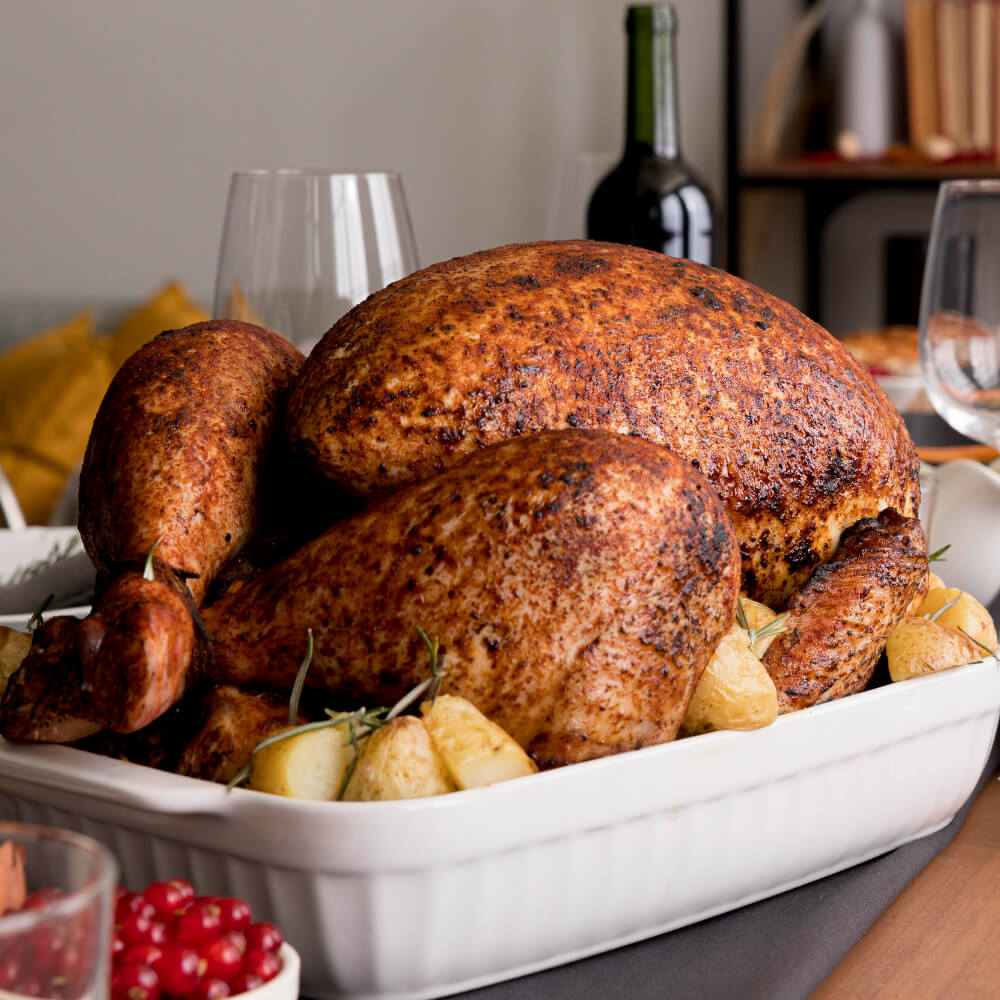
How to Create a Turkey-Based Charcuterie Board
A turkey charcuterie board is a festive centerpiece, perfect for post-dinner grazing or as a casual appetizer platter.
1. Choose a Base
Use a wooden board or large platter to arrange the ingredients. Ensure it’s big enough for variety but manageable for your table space.
2. Prepare Turkey Options
- Slice leftover turkey breast or dark meat into bite-sized portions.
- Add turkey deli slices rolled into rosettes for presentation.
3. Add Cheeses
- Include mild cheeses like brie or cheddar to balance turkey flavors.
- Pair with something tangy like goat cheese.
4. Incorporate Fruits and Nuts
- Fresh fruits like apple slices, grapes, and dried cranberries pair beautifully.
- Add roasted nuts such as almonds or pecans for texture.
5. Include Dips and Spreads
- Offer small bowls of cranberry sauce, herbed butter, and turkey gravy.
- Consider a spicy mustard or honey-mustard sauce for variety.
6. Round It Out with Crackers and Bread
- Arrange an assortment of crackers, breadsticks, and sliced baguette.
- Include soft rolls or croissants for mini turkey sandwiches.
7. Add Garnishes
- Fresh herbs like rosemary and thyme not only add aroma but also enhance the visual appeal.
- Sprinkle pomegranate seeds for a festive touch.
Pro Tips:
- Use small labels to identify items on the board for a professional look.
- Arrange ingredients in clusters to make it easy for guests to grab and enjoy.
- Ensure balance by including both salty and sweet options.
Themed Turkey Charcuterie Boards for the Holidays
Holiday gatherings call for festive and creative twists. Below are some fun and unique ideas to elevate your turkey charcuterie board for special occasions:
1. Thanksgiving-Inspired Board
Focus on comforting, fall-inspired flavors.
Ingredients:
- Cooked turkey slices (dark and white meat)
- Mini stuffing bites (formed into small balls)
- Roasted sweet potato wedges or cubes
- Cranberry chutney or relish for dipping
- Brie, sharp cheddar, and smoked gouda
- Candied pecans or walnuts
- Sliced apples, pears, and dried apricots
- Mini pumpkin muffins or cornbread slices
Garnishes:
- Add small sprigs of rosemary and thyme for a rustic look.
- Scatter pomegranate arils for pops of color.
Pro Tip: Serve small bowls of gravy shots for dipping turkey slices.
2. Christmas Turkey Board
Bring a winter holiday theme to the table with festive elements.
Ingredients:
- Turkey breast slices shaped into Christmas tree designs
- Soft goat cheese logs rolled in chopped pistachios and cranberries
- Miniature croissants for turkey sandwiches
- Dried cranberries and candied orange peels
- Red and green grapes, kiwi slices, and fresh cherries
- Wedges of brie topped with cranberry jelly
Garnishes:
- Use fresh mint leaves or sprigs of pine to create a festive vibe.
- Edible gold dust lightly brushed on crackers or cheese adds a luxe feel.
Pro Tip: Include a small bowl of honey-mustard glaze for a sweet-tangy dip.
3. New Year’s Eve Board
Add sophistication to your board to celebrate the new year.
Ingredients:
- Turkey pastrami or smoked turkey slices for a gourmet twist
- Assorted artisan crackers and breadsticks
- Camembert, aged cheddar, and blue cheese
- Marinated olives and roasted red peppers
- Sliced figs and honeycomb
- Dark chocolate squares or chocolate-covered pretzels for a sweet addition
Garnishes:
- Sprinkle edible flowers or gold flakes for an elegant presentation.
- Use champagne flutes as props, filled with crackers or breadsticks.
Pro Tip: Include turkey sliders on mini brioche buns with cranberry mayo for something hearty.
4. Kid-Friendly Turkey Board
Perfect for family gatherings with little ones.
Ingredients:
- Turkey nuggets or sliced turkey breast cut into fun shapes (stars, hearts, etc.)
- Cheddar cheese cubes and string cheese
- Baby carrots, cucumber sticks, and cherry tomatoes
- Animal crackers and mini pretzels
- Small bowls of hummus, ranch dip, and applesauce
Garnishes:
- Add gummy bears or fruit snacks for a pop of fun.
- Use colorful toothpicks for easy grabbing.
Pro Tip: Arrange food in a rainbow pattern to make it visually appealing for kids.
Final Touches for All Boards
Regardless of the holiday theme, remember these tips:
- Use a mix of heights and textures to create visual interest.
- Always provide a mix of proteins, carbs, and fresh elements for balance.
- Don’t forget serving utensils like cheese knives, small forks, and toothpicks.
Wine and Cocktail Pairings for Turkey Charcuterie Boards
Pairing the right wine or cocktail with your turkey charcuterie board can elevate the flavors and make your gathering unforgettable. Below are some wine and cocktail suggestions tailored to complement each themed turkey board.
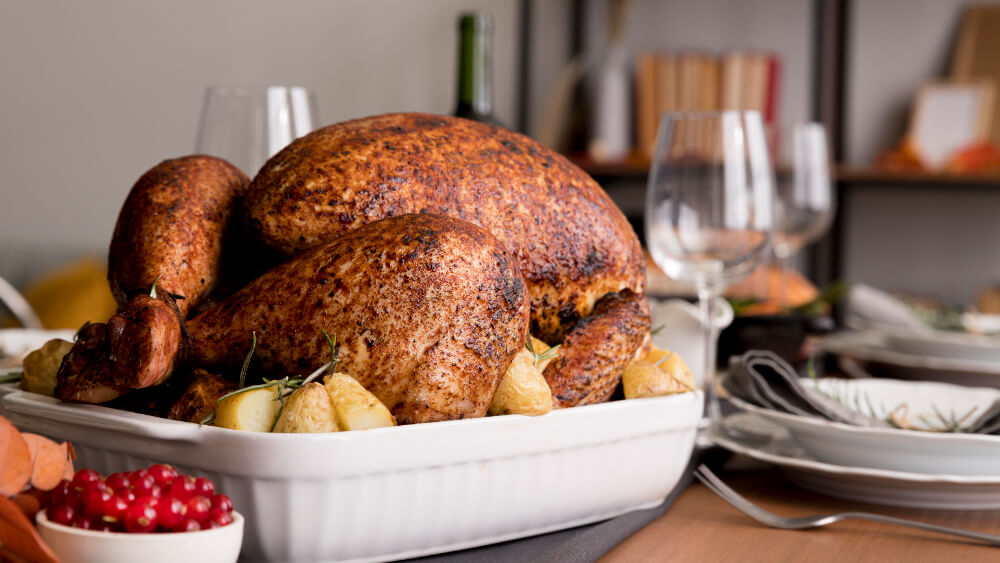
1. Thanksgiving-Inspired Board
Wine Pairing:
- Pinot Noir: Its earthy and fruity notes enhance the roasted turkey and cranberry flavors.
- Chardonnay: Opt for a lightly oaked Chardonnay to complement the creamy brie and roasted sweet potatoes.
Cocktail Pairing:
- Cranberry Moscow Mule: The tangy cranberry blends beautifully with the board’s sweet and savory elements.
Ingredients: Vodka, ginger beer, cranberry juice, and lime. Serve in a copper mug.
Non-Alcoholic Option:
- Spiced apple cider with a cinnamon stick garnish.
2. Christmas Turkey Board
Wine Pairing:
- Cabernet Sauvignon: Its bold and rich flavors balance the smoked turkey and cranberry jelly.
- Prosecco: The bubbles cut through the richness of the cheese and provide a festive flair.
Cocktail Pairing:
- Holiday Sangria: Combine red wine, orange liqueur, cranberries, and apple slices. Add a sprig of rosemary for garnish.
Non-Alcoholic Option:
- Pomegranate spritzer made with sparkling water and pomegranate juice.
3. New Year’s Eve Board
Wine Pairing:
- Champagne or Sparkling Rosé: These add sophistication and pair perfectly with the aged cheddar and blue cheese.
- Malbec: Its deep, rich flavor complements turkey pastrami and marinated olives.
Cocktail Pairing:
- French 75: Gin, champagne, lemon juice, and a touch of sugar make this light and celebratory.
- Whiskey Sour: Its tart, sweet flavor complements the savory elements on the board.
Non-Alcoholic Option:
- Sparkling lemonade with a splash of elderflower syrup.
4. Kid-Friendly Turkey Board
Wine Pairing (For Adults):
- Rosé: Its light, fruity notes complement the mild turkey and cheese.
Cocktail Pairing (For Adults):
- Strawberry Lemonade Punch: A mix of lemonade, sparkling water, fresh strawberries, and vodka (optional).
Non-Alcoholic Option:
- Fruit-infused water (try orange slices and mint or strawberries and basil).
Tips for Serving Drinks with Charcuterie Boards
- Temperature Matters: Keep whites and sparkling wines chilled, but serve reds slightly cooler than room temperature.
- Garnish Cocktails: Simple garnishes like fresh herbs, citrus slices, or sugared rims can make cocktails feel extra special.
- Offer Variety: Have both alcoholic and non-alcoholic options to cater to all guests.
- Glassware: Serve wines in proper glasses and cocktails in fun or thematic drinkware for added flair.
Leftover Turkey Charcuterie Board Ideas
Transforming leftovers into an exciting turkey charcuterie board is a great way to minimize waste while delighting your guests with a creative and flavorful spread. Below are some inspired ideas to incorporate leftover turkey in your next charcuterie arrangement.
1. Classic Leftover Board
This board uses classic Thanksgiving leftovers to create a balanced and vibrant display.
Ingredients to Include:
- Protein: Leftover turkey slices (light and dark meat).
- Cheese: Havarti, sharp cheddar, or cream cheese (perfect for spreading on crackers).
- Carbs: Leftover dinner rolls, stuffing squares (baked into crispy bites), and assorted crackers.
- Vegetables: Roasted carrots, green beans, and Brussels sprouts.
- Spreads and Sauces: Cranberry sauce, turkey gravy (served warm in a small ramekin), and honey mustard.
- Extras: Pickled onions, candied pecans, and fresh herbs like rosemary for garnish.
Serving Tip: Use mini bread slices to create DIY turkey sliders.
2. Mexican-Inspired Leftover Board
Turn turkey into a fiesta with these bold flavors.
Ingredients to Include:
- Protein: Shredded turkey tossed in taco seasoning.
- Cheese: Queso fresco, Monterey Jack, or pepper jack.
- Carbs: Mini tortillas, tortilla chips, and cornbread wedges.
- Vegetables: Sliced avocado, roasted corn, and salsa fresca.
- Spreads and Sauces: Guacamole, pico de gallo, and chipotle mayo.
- Extras: Lime wedges, fresh cilantro, and pickled jalapeños.
Serving Tip: Arrange the ingredients in taco shells for a build-your-own taco experience.
3. Mediterranean-Inspired Board
Infuse leftover turkey with Mediterranean flair for a light yet satisfying board.
Ingredients to Include:
- Protein: Sliced turkey breast seasoned with olive oil, oregano, and lemon.
- Cheese: Feta, goat cheese, or halloumi.
- Carbs: Pita bread triangles, couscous fritters, and flatbread crackers.
- Vegetables: Hummus-stuffed mini peppers, cherry tomatoes, and cucumber slices.
- Spreads and Sauces: Tzatziki, hummus, and roasted red pepper spread.
- Extras: Kalamata olives, sun-dried tomatoes, and fresh dill sprigs.
Serving Tip: Serve tzatziki and hummus in small bowls to avoid mixing flavors on the board.
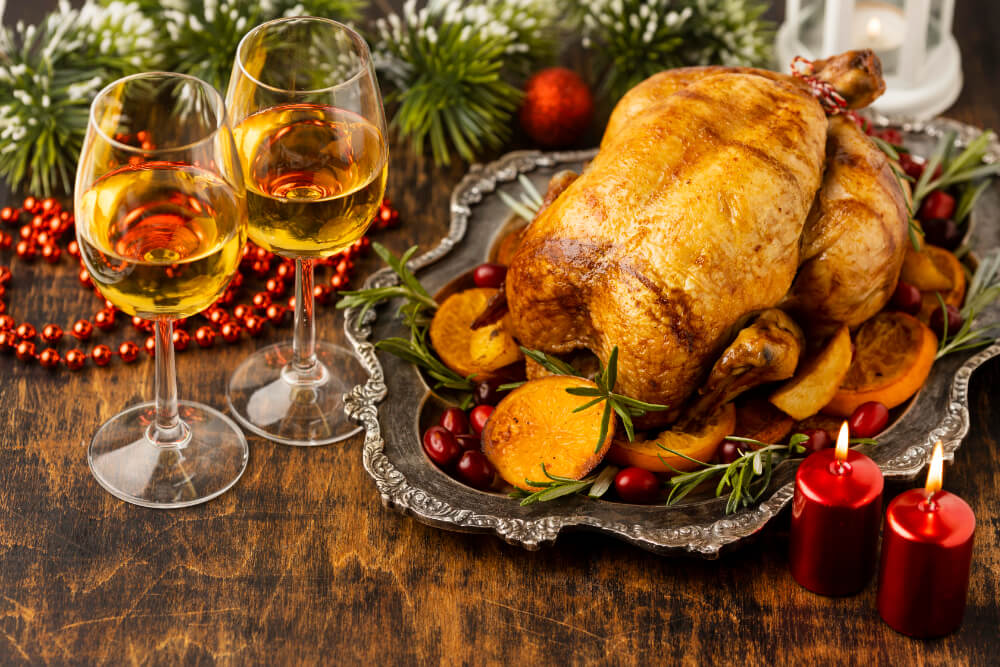
4. BBQ Leftover Board
Transform turkey into smoky barbecue goodness with this hearty board.
Ingredients to Include:
- Protein: Smoked or shredded turkey mixed with barbecue sauce.
- Cheese: Smoked gouda, sharp cheddar, or Colby jack.
- Carbs: Cornbread muffins, toasted sandwich rolls, and pretzel bites.
- Vegetables: Pickles, slaw, and roasted sweet potatoes.
- Spreads and Sauces: Honey butter, barbecue sauce, and ranch dressing.
- Extras: Crispy onion rings, jalapeño chips, and fresh parsley.
Serving Tip: Arrange cornbread muffins and turkey in the center for easy assembly.
How to Make the Most of Leftovers
- Reheat Thoughtfully: Warm leftover turkey in broth to keep it moist before adding to the board.
- Layer Flavors: Pair salty turkey with sweet fruits or tangy pickles for balance.
- Keep It Fresh: Incorporate fresh herbs, vegetables, and zesty sauces to liven up the flavors.
- Customize It: Tailor the board to fit the preferences of your guests or whatever leftovers you have on hand.
Dessert Pairings for Turkey Boards
A well-rounded charcuterie board deserves sweet endings! Pair your turkey charcuterie board with complementary desserts that enhance the overall meal experience. Here are some creative dessert ideas to add a touch of sweetness to your feast.
1. Cranberry and White Chocolate Bark
This easy-to-make dessert combines the tartness of cranberry with creamy white chocolate. It’s a perfect complement to the savory notes of turkey.
Ingredients:
- White chocolate chips
- Dried cranberries
- Chopped pistachios or almonds
- A sprinkle of sea salt
How to Serve: Break the bark into small pieces and arrange it next to your board.
2. Pumpkin Spice Truffles
Infuse the warmth of pumpkin spice into rich, bite-sized truffles.
Ingredients:
- Cream cheese
- Crushed graham crackers
- Pumpkin puree
- Pumpkin pie spice
- White or dark chocolate for coating
Serving Tip: Place the truffles in decorative mini cupcake liners.
3. Maple Pecan Cookies
Cookies with a chewy texture and nutty flavor make a delightful pairing.
Ingredients:
- Maple syrup
- Chopped pecans
- Brown sugar
- Vanilla extract
How to Serve: Stack cookies in a small tiered tray next to the board.
4. Mini Apple Hand Pies
These handheld treats provide a rustic finish to your spread.
Ingredients:
- Pie crust
- Sliced apples
- Brown sugar
- Cinnamon
Serving Tip: Warm the pies and serve them with a dollop of whipped cream or caramel sauce.
5. Chocolate-Covered Pretzels
Simple yet elegant, chocolate-dipped pretzels offer a sweet-and-salty finish.
Ingredients:
- Pretzel rods
- Milk or dark chocolate
- Sprinkles or crushed peppermint
How to Serve: Arrange them in a small mason jar or cup on the side.
Pairing Tips
- Balance Flavors: Ensure the desserts don’t overpower the savory elements of your turkey board.
- Stick to the Theme: If your board leans toward Mediterranean flavors, choose light desserts like baklava or lemon bars.
- Offer Variety: Include options for different tastes, such as chocolate, fruit-based, and nutty desserts.
- Presentation Matters: Use small serving trays or bowls to separate desserts from savory items.
Storing Leftover Turkey
Preserving your leftover turkey properly is crucial to maintaining its flavor and ensuring food safety. Here’s a guide to keep your leftover turkey as delicious as it was the first time around.
1. Cool the Turkey Quickly
After your meal, let the turkey cool to room temperature within 2 hours. This step helps prevent bacterial growth while preparing it for refrigeration or freezing.
2. Slice and Store Cooked Turkey
Instead of storing the whole turkey, carve it into smaller portions. This makes it easier to reheat and prevents over-drying.
How to Store:
- Refrigerator: Place the turkey in airtight containers or resealable bags. Use within 3-4 days.
- Freezer: Wrap turkey tightly in plastic wrap, then store in freezer bags or aluminum foil. Properly frozen turkey can last up to 6 months.
3. Cooked Turkey Reheat Properly
Reheat only the portion you plan to eat to avoid repeatedly exposing it to temperature changes.
Reheating Methods:
- Oven: Wrap turkey slices in foil and heat at 325°F until warmed through.
- Microwave: Cover with a damp paper towel to retain moisture.
- Stovetop: Add turkey to a skillet with a splash of broth for added juiciness.
4. Use Leftovers Creatively
Transform your turkey into new meals to avoid boredom. Here are some ideas:
- Turkey soup or stew
- Turkey pot pie
- Turkey quesadillas or tacos
- Turkey-stuffed sandwiches
Food Safety Tips
- Never leave cooked turkey out for more than 2 hours.
- Always use clean utensils and containers when handling leftovers.
- When reheating, ensure the turkey reaches an internal temperature of 165°F.
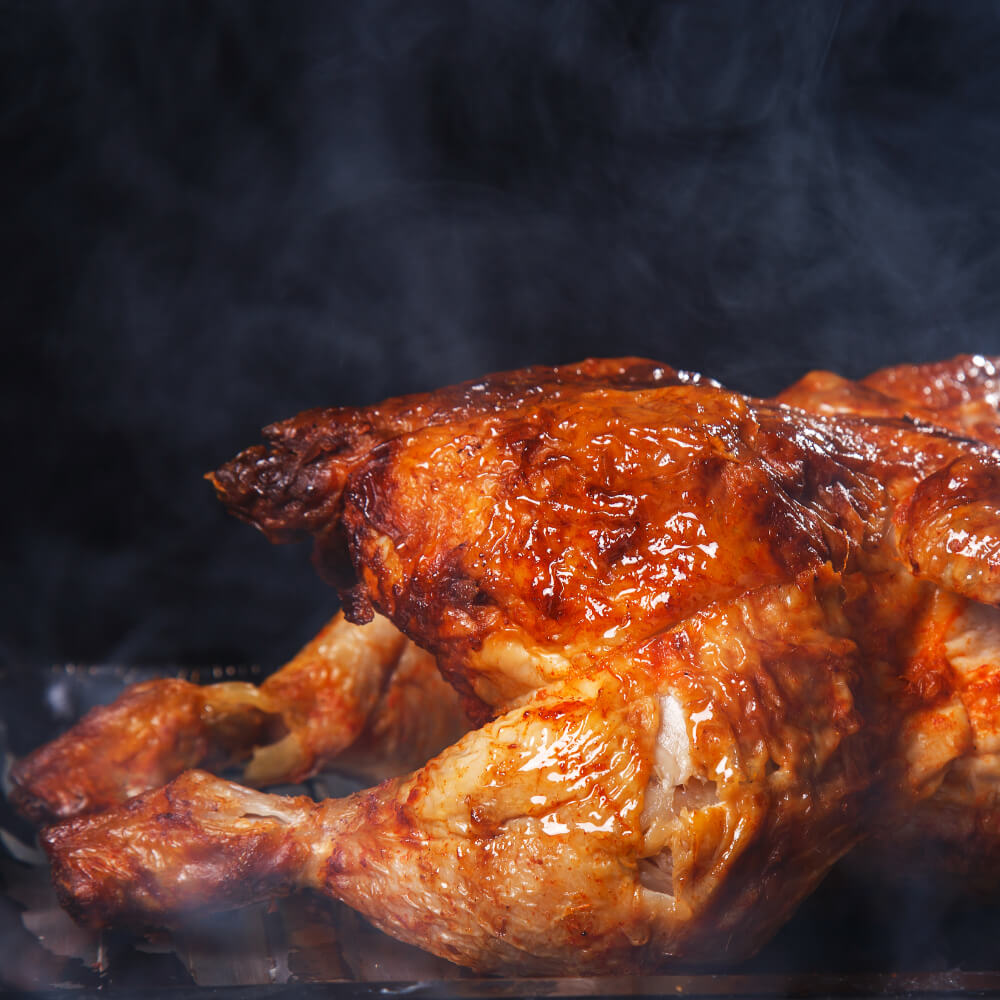
FAQs About Cooked Turkey
To wrap up your turkey guide, let’s address some of the most frequently asked questions. These will help clarify common concerns and ensure your turkey journey is seamless.
1. Can I Eat Cooked Turkey After 5 Days?
While refrigerated turkey remains safe for 3-4 days, it’s best to consume it within that timeframe. If you’re beyond 4 days, freezing leftovers is a safer option. Always trust your senses—if it smells or looks off, discard it.
2. How is Turkey Cooked?
Turkey is typically roasted in an oven, but you can also smoke, deep-fry, or slow-cook it. For beginners, roasting is the easiest method. Preheat the oven to 325°F, season the bird, and cook until the internal temperature reaches 165°F.
3. Can You Buy Ready-Cooked Turkey?
Yes, many supermarkets and specialty stores sell ready-to-eat cooked turkey. These are great for quick meals or stress-free holiday hosting. Look for vacuum-sealed options to retain freshness.
4. Is Cooked Turkey Done at 165°F or 180°F?
The safe internal temperature for cooked turkey is 165°F. Use a meat thermometer to check the thickest part of the breast and thigh without touching the bone. Overcooking can dry out the meat, so stick to this temperature for a moist result.
5. How to Cook a Turkey for Beginners?
Here’s a simple beginner-friendly method:
- Preheat the oven to 325°F.
- Season the turkey generously inside and out.
- Place it breast-side up on a roasting rack.
- Cover loosely with foil for the first 1-2 hours, then remove for browning.
- Check the internal temperature at 165°F before removing from the oven.
6. What is Cooked Turkey Breast?
Turkey breast is the leanest part of the bird, often sold separately for smaller meals. It can be roasted, grilled, or smoked. Pair it with cranberry sauce or gravy for an easy dinner.
7. What Are Some Cooked Turkey Recipes?
Transform leftover or fresh cooked turkey into:
- Turkey and vegetable soup
- Turkey Alfredo pasta
- Barbecue turkey sliders
- Classic turkey sandwiches
8. Where to Buy Cooked Turkey?
Ready-to-eat cooked turkey is widely available in grocery stores like Whole Foods, Trader Joe’s, and Costco. Check your local deli for freshly prepared options during the holiday season.
9. How Long to Cook Turkey in the Oven?
For a whole turkey, plan for 15 minutes per pound at 325°F. Always rely on a thermometer to confirm doneness at 165°F.
10. How to Cook a Turkey in the Oven to Be Moist?
To keep your turkey moist, baste it with its juices every 30 minutes. Additionally, placing a layer of butter or herb-infused oil under the skin adds extra flavor and prevents drying out.
Bonus Tips for Cooking Turkey
To elevate your turkey experience, here are some expert tips that will ensure the juiciest and most flavorful results.
1. Brining the Turkey
Brining is a game-changer for retaining moisture. Use a mixture of water, salt, sugar, and herbs. Soak the turkey in this solution for 12-24 hours before cooking. This process locks in moisture and infuses flavor into every bite.
2. Resting After Cooking
Let your turkey rest for at least 20 minutes after cooking. This step allows the juices to redistribute, ensuring tender and juicy meat when you carve.
3. Use a Meat Thermometer
Never guess the turkey’s doneness. Insert a thermometer into the thickest part of the breast and thigh. Remember, 165°F is the golden number for safety and perfection.
4. Enhance the Gravy
For richer gravy, add the turkey drippings to a roux made of butter and flour. Enhance it further with a splash of white wine or chicken broth.
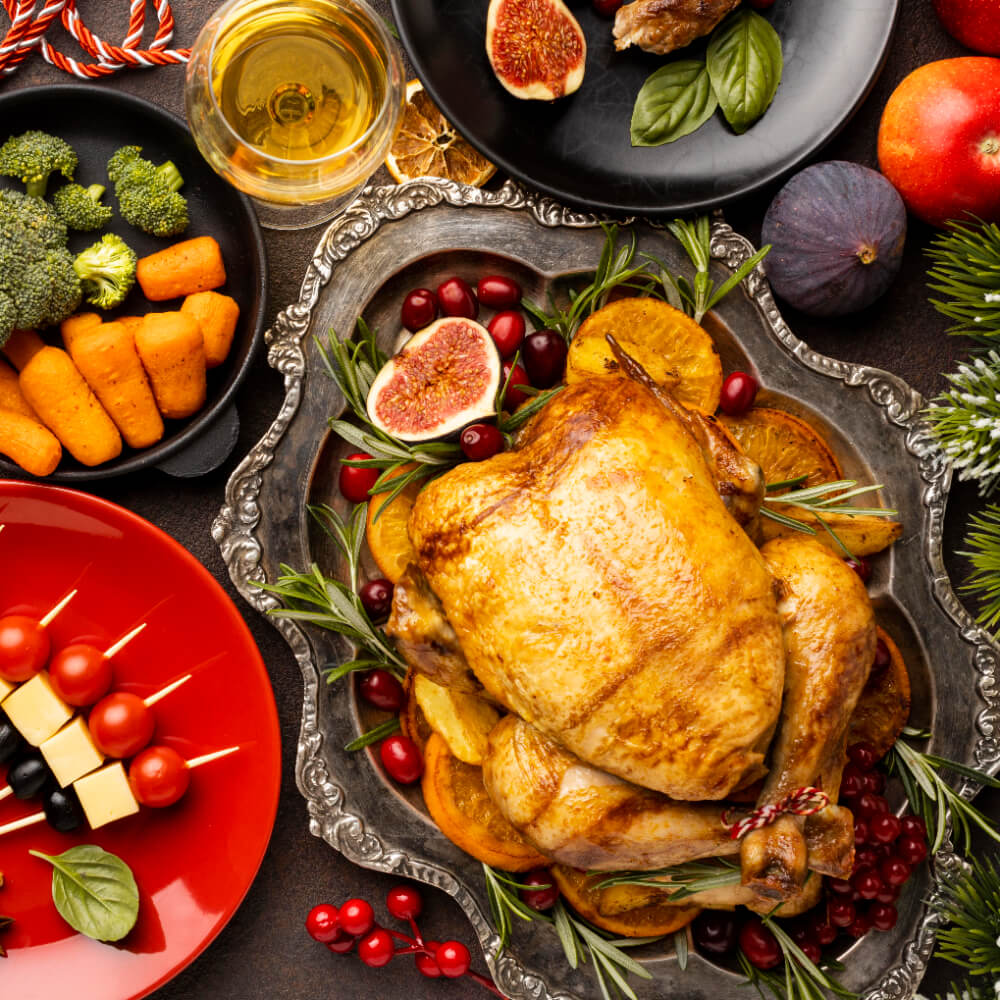
Perfect Pairings for Cooked Turkey
Pairing your turkey with the right sides and drinks can transform the meal into a feast. Here are some suggestions:
- Mashed Potatoes and Gravy: Classic and comforting.
- Green Bean Casserole: Add crunch and creaminess.
- Cranberry Sauce: The sweet-tart balance complements turkey beautifully.
- Stuffing with Herbs: Infused with sage and thyme for a savory kick.
- Pumpkin Pie: End the meal on a sweet note.
Cooking a turkey is an art that brings families together, whether during the holidays or for a special dinner. With a little preparation and the right techniques, your cooked turkey can become the centerpiece of an unforgettable meal.
From mastering the perfect temperature to selecting the best sides, you now have the tools to create a moist, flavorful turkey. Don’t forget the essential steps like brining and resting for optimal results.
Explore more turkey-inspired recipes and cooking tips on 30minrecipes.com, and make your next turkey meal a true culinary triumph. Let’s bring the joy of cooking to every table!

